
Many people playing computer games do not even realize how many works and creative ideas are invested in each individual game.
The creation of a game is a long and laborious process consisting of a wide variety of stages, including both technical and creative moments. That's why, for the most part, games create not individual personalities, but entire development teams. Every single person in a team is an expert in his area of expertise.
Let's mentally create your own computer game to follow all stages of development, from beginning to end, and find out what professions are in demand in the gaming industry.
|
Design
1. Purpose : - idea, - genre, - setting.
2. Means : - program code, - game engine.
Creation
3. Game mechanics : - objects, - control, - physics engine, - AI.
4. Levels : - placement of objects (level design).
5. Graphics : - art, - 2D, 3D models, - animations,
- backgrounds, - special effects, - screen and menu design.
6. Plot : - scripts, events, - dialogs, narrations, - video sequences.
7. Sound : - sound effects, - music, - voice acting.
Edition
8. Refinishing : - material reduction (a-version), - error correction (b-version).
9. Sale : - advertising, - localization, - sale system.
10. Support : - release patches, - release add-ons.
|
1. Purpose
The first thing we need is to determine our goal. What do we want to end up with? If you want your game to "shoot", you need to start aiming rather, rather than hitting at random.
The concept and goal definition stage is
the project manager .
Genre
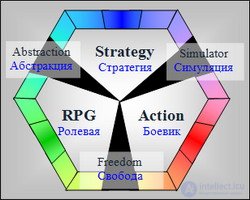
It is possible from the very beginning to present the finished game in the smallest details, or it is possible, in the course of development, to think out the plot, style and features of the game. In this case, unnecessary accuracy is not necessary, but, at a minimum, you need to set the direction of development of our game project. Game genre must be selected at the very beginning without fail. Genre and will be the main direction of the game.
We look at the round table of genres as a target, and choose the gameplay gameplay elements we need (for more information about the table of genres, see the article "
Genres of computer games "). Some elements will give us high popularity among players (destruction, competition, hero, care), some - loyal, but picky fans (tactics, control, evasion), and some - the absence of serious competitors (training, logic, travel, economy).
The selected genre can be slightly adjusted in the course of work, but its essence should remain the same. The genre is a kind of foundation for the whole game. If you want to change the genre of your game, it will be easier to start developing a new game again than to redo what has already been developed.
Setting
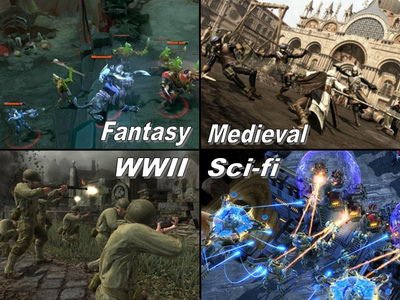
The division of computer games into genres is very specific and unlike the system of genres of films and books. Game genres determine only the basic actions that players will perform during the game, thus they answer only the question "WHAT?". The questions "WHERE?" and when?" another main characteristic of the game is the setting.
The setting is a game belonging to a plot topic or to a certain virtual world. Among the computer games, several of the most popular settings have been formed: fantasy, science fiction (sci-fi), World War II, the Middle Ages, steampunk, post-nuclear world, anime, comics.
Creating a game in a popular setting ensures its own popularity, and the players feel cozy and comfortable in an already familiar world. Some games are created in their unique settings or in unusual combinations of standard themes. Such games are less popular, but, nevertheless, they have their own audience of particular players who can not stand stereotyped and monotony.
2. Means
The goal of the game project is set, now we need to choose the means (materials and tools) to achieve it. And here we are faced with an unusual phenomenon of the computer world - and the material, and the tool of the game project is the same entity - the program code. The code as a building material is digital images, three-dimensional models, sounds and texts in the form of sequences of ones and zeros. Code as a tool is commands in lines of program code that control game objects of all the types listed.
Program code

Creating a game material (content, content) is a purely creative part of the process, we will consider it a bit later, but for now let's analyze the program code only as a tool. In this case, the program code is a skeleton (skeleton) on which the results of all subsequent development stages will be strung.
This stage involved
programmers .
First of all, we must choose a programming language that suits us best. After that, hard and painstaking work is needed on writing software code capable of operating with two-dimensional or three-dimensional objects in space, the binding of images and sounds. To create a virtual three-dimensional space, it is necessary to use complex geometric formulas for constructing the projection of 3D objects on a plane (in the computer's mind, objects exist in real three-dimensional space, but to display their images on a flat two-dimensional screen, you have to do recalculations). In the course of development will have to explore all formats of images and audio files, various codecs and encodings.
Game engine
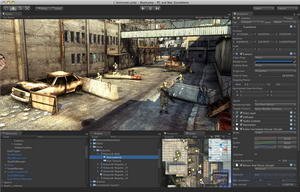
Fortunately, in our time, you can not mess around for a long time with writing low-level software, and immediately use the ready-made software module (game engine), where basic functions have already been implemented that can link together graphics, sound, objects and their movements. Thus, the choice of programming language is replaced by another dilemma - the choice of a ready-made game engine (for more information on the game engines currently available on the market, see the article “
Free game engines ”).
The use of game engines still does not relieve us completely from using the services of programmers, but it reduces them to a minimum. Standard software module still have to customize, add something different to it, so that the game project is more unique.
3. Game mechanics
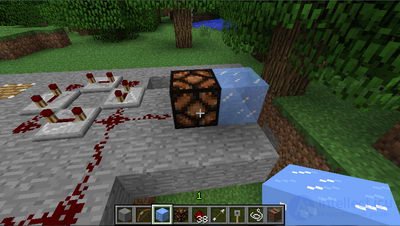
The most important creative part of any game is game mechanics. This thing is not on the surface, so it often eludes the gaze of inattentive game lovers.
Young adolescents (the main part of the game audience) are mostly rated by the quality of graphics, and do not notice that beautiful games are popular, but their popularity lasts only a few months after release. And in the hearts of the players and in the gold lists of the eternal gaming classics, completely different games remain forever, maybe a little inconspicuous in appearance, but having amazingly exciting gameplay. The more diverse and interesting gaming opportunities, the longer the player stays in the game. For example, why did you get MineCraft universal love? Certainly not for the primitive cubic graphics, but for the fact that this game gives truly unlimited gaming opportunities.
If we imagine the game as a living organism, then the game mechanics will be its nervous system and brain. And if you imagine the game as a house under construction, the game mechanics will appear as electrical wiring, piping and other household engineering communications. Imagine what is happening with beautiful and fashionable, but not thoughtful games from this point of view: you can live in a beautiful house, but if there is no lighting, plumbing and sewage in it, then at the first opportunity you will leave it in search of a more comfortable housing.
Game mechanics, in essence, is a set of rules by which the game will function. What action will happen if a player takes this bonus? If a player touches the enemy, then what happens then? Will he lose his health from this contact, or will it happen only after hitting the enemy? If a player comes to the car, can he get into it and take a ride? Can a player build something or at least move objects? There may be several hundred or even thousands of such questions. The answers to all these questions will be game mechanics.
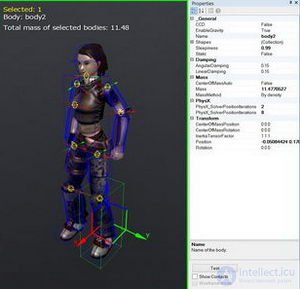 Objects
Objects
The basis of the whole mechanics are game objects. The protagonist of the game, computer rivals, secondary characters (NPC), bonuses, moving objects, scenery - all these are game objects with their own properties and possible actions.
Control
Game mechanics determines which keys will control the main character or the main game object, what action will occur after pressing a particular button. This also includes the laws of the behavior of game objects (physics engine) and the behavior of enemies (artificial intelligence).
Physics engine

If the “control” is responsible for the movement of the character under our control, then the physical engine is responsible for the movements that occur without the direct intervention of the player. These actions mimic the physical laws of the real world (sometimes a bit distorted towards fiction). An abandoned ball bounces off the floor, an overturned barrel rolls down from an inclined surface, a shot with a powerful weapon throws the shooter back, a fragile object thrown from a height is broken - these are all examples of the action of the physical engine.
In the finished game engines, physical engines are most often implemented. You just need to assign your already-made physical characteristics to your unique objects: weight, density, elasticity, destructible. If you plan to create your own physics engine, then for this you will need a talented programmer who is well aware of the principles of object-oriented programming (OOP) and a little versed in classical physics.
Artificial Intelligence (AI)

AI is responsible for the behavior of computer enemies or allies.
The role of AI varies considerably by game genre. In action, the actions of the enemies are extremely primitive; in the RTS strategies, a couple dozen scripts are enough to give the opponent an apparent rationality; in stealth actions, slashers and fighting games, you must create a unique system of behavior for each type of enemy, otherwise foolish enemies will make the game uninteresting. A serious strategic game requires tremendous work on AI, and in simple casual games and online projects focused on battles only between real players, artificial intelligence is not needed at all.
4. Levels

The rules of the game in the form of game mechanics are ready, now we need to create platforms where these rules will start to work. Created game objects are placed in separate virtual spaces - levels (locations). Games often contain many separate levels, the transition between which occurs during the plot. But lately, thanks to the increased performance of computers, games are released with one large whole world, which is only conditionally divided into different locations (GTA, Skyrim).
At each separate level game objects, walls, platforms, scenery, backgrounds are placed. Levels are created in games of all genres. Even in an unpretentious casual game of shifting colored pebbles there are levels - playing fields and placing stones are their roles. In browser games, separate html pages act as locations.
If, again, to present the game in the form of a house, then the construction of game levels is the layout of the floors, and the number of levels is the number of floors of the building.
Levels deal with level
designers .
Ideally, level designers are taken from among avid players. This is because any other person from the side, even if creative, but very far from the theme of games, will not be able to cope well with this task. A level designer should have a good understanding of the gameplay, and feel how the game situation changes as a result of moving objects on a level.
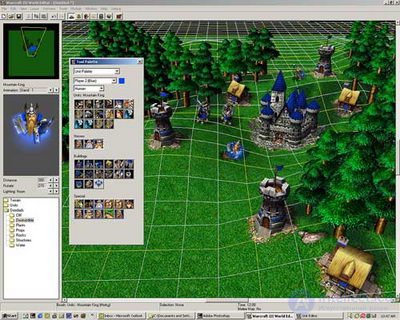
Quite often, a level editor is supplied with the game, through which ordinary players can create new maps and levels for themselves. Game developers support the distribution of homemade cards between players and often spread the best work on their official servers. Level editors are created not only to entertain players and increase the life of a single game, but also to find the most talented people among the game audience. Thus, gaming studios solve their personnel problem. As mentioned above: the best level designer is an avid player.
The most important component of the game - the gameplay - depends on the design (not the design, but the layout) of the levels. (This rule does not apply only to most casual games, fighting games and sports games, where levels are extremely primitive). Uninteresting and monotonous level planning has ruined many games with great design, supported by the latest technology. If you want to create a full-fledged exciting game, and not a dummy in a beautiful wrapper, then you need to spend maximum creative effort on design design.
5. Registration
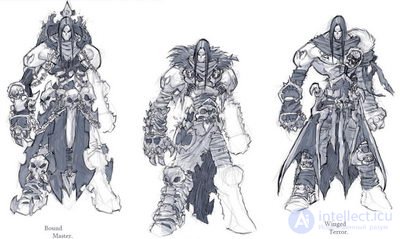
Next, we begin to cover the bare frame of the game with an ornament in the form of graphics.
Graphics are created by
artists ,
game designers .
Of course, if you are developing a simple 2D game, then you yourself can draw something from the pixels, but in more serious and large-scale projects it is better to hire professional artists and designers.
Arta
First you need to create images of heroes, enemies, game items, backgrounds. Initially, they are drawn either on paper or on a computer using a graphic tablet. For small gaming studios, this stage is not obligatory, but it is simply necessary in large companies, so that not on the fingers, but on the visual images, explain to all designers what they should have in the end.
2D, 3D models
On the basis of art designers create either two-dimensional sprites from pixels, or three-dimensional models from polygons.
 Animations
Animations
For game objects that will move during the game, animations are created. It is especially difficult to have with heroes and enemies, the number of animations which sometimes exceeds a hundred different movements.
Currently, to create human-like 3D-characters, there is a special technology "Motion Capture", which allows you to create animations based on the movements of real people. This technology is available only to large and very rich companies. To use Motion Capture, you need not only to purchase expensive equipment, but also to hire a group of actors from which movements will be recorded.
Backgrounds
Everything is much simpler with backdrops - I drew it once, put it in the right place at the level without any changes, and forgot it.
Special effects
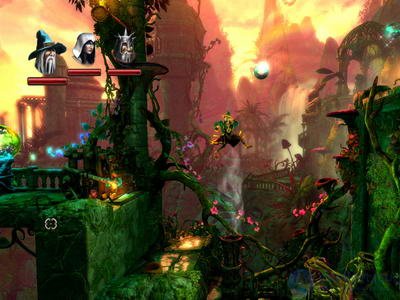
Visual special effects are, in essence, the same animations, but instead of moving objects in them, moving particles and light filters are used. Rays of light in different directions when taking bonuses, fire on a burning building, smoke screen after the explosion of a grenade, laser beams from the barrel of rifles, the imposition of blur filters when under water and blackout filters in poorly lit places - all these are special effects. Without such effects, the game will seem bland and too ordinary. The use of special effects adds to the game brightness, richness and expressiveness.
Screen and menu design

You need to decorate not only the game levels, but also the system that unites them into a single whole - the game menu (lines, buttons, settings pages). The initial menu is generally the business card of the game, and it should look perfect. On the game screen there are also many elements to which you can apply the design - the number of lives, lifebar, minimap, quick-action menu, hero inventory, task lists, dialog screens. In English, all this is called one abbreviation - GUI (Graphical User Interface - graphical user interface).
Artists ,
programmers and
web designers of HTML pages design the interface and menu.
6. The plot

Attracting a player to your project is very difficult, but even harder to make the player go through the game to the end. Any disappointment, boring or difficult place can instantly push the player away from further play. In most cases, the player will leave and forget the game without regret.And only a competently submitted high-quality storyline can make a player gather strength, go through the whole game, which means listen to your interactive story to the end.
At the dawn of their existence, computer games did without a plot, dragging players only with their gameplay. But now even the simplest casual game is fastened to the plot, not to mention the large AAA-class game projects.
Although, the existence in the game of the plot only for a tick does not give any positive effect, the developers continue to invent new and new stories, one more stupid than the other. The plot is beneficial only if it can catch the feelings of the player. This requires the uniqueness, interestingness and plausibility of the plot; each character must have his own unique personality, and commit acts according to her; actors and events should be no more than the human brain can perceive, otherwise the plot will turn into an incomprehensible vinaigrette; events should occur logically (mystery and nebula is welcomed to maintain plot intrigue, but at the same time there must be consistency hidden from the player).
Scripts, events
The best option is when the plot exists right inside the game. This is achieved through the use of scripted scenes.
The script is as follows: the player enters a certain place, or performs the desired action, or some other necessary conditions are fulfilled, and after that, the actions you have programmed for this case begin to be performed. For example, in a military 3D shooter, we climb a hill, approach the installed machine gun (the condition is fulfilled), 10-15 seconds after that an enemy massive attack suddenly begins below, and we have someone to use the machine gun (events occurred).
With the help of scripted events, you can make a variety of gameplay or even turn the game into an attraction of endless scripts (this is what the Call of Duty game series is built on). The only disadvantage of this method is that the player has less freedom of action. Everything happens at the behest of scripts, and little depends on the actions of the player.
Scripting is done by the
scriptwriters , and the
programmers implement them .
Dialogues, narration
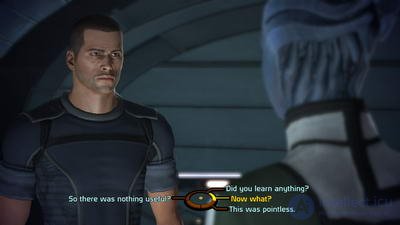
In old classic games, the plot exists apart from the gameplay. For example, when loading or ending levels, we are introduced to the storyline, talk about the relationship between heroes and enemies, explain what and what needs to be done on the level. In the process of the game itself, none of the above makes any difference, and the player can safely skip all these texts. Most often this is the case - the texts remain unread. And all because there is no good reason to read them.
Another thing - in-game texts or dialogues. They occur during the game, but in safe places, or with stopping playing time, so that the player can focus only on the text. The player has to listen to the narration, since the game at this time freezes, but does not stop at all. And in the dialogs also need to choose the answer option. The choice of the option gives interactivity to listening to the text and at least some practical sense - a correctly chosen answer can bring an additional bonus, facilitate the further game or save the chosen character of the hero in role-playing games.
It is a text filed during the game. If you choose a language, it will help you.
Writing texts and dialogues are done by
writers and
writers .
It
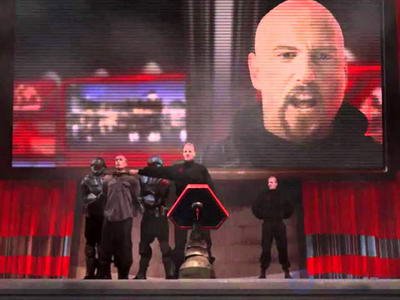
can be seen that you can watch video sequences (cutscene). This is a game.
Video files allow you to transfer a picture of any quality and complexity to the player, but when creating a game distribution kit they take up a lot of disk space. The screensavers created on the game engine, by their quality, are almost as good as the pre-rendered video recordings, but for a good view of them the player must have a powerful enough computer, which is not always the case.
Artists ,
animators ,
3D-modelers ,
screenwriters ,
directors
are engaged in the creation of video sequences .
7. Sound
A beautifully drawn and spectacularly designed project silently looks at us and waits for us to add sound to it.
Sound effects
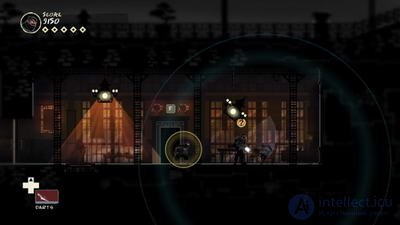
For any game movement you need to add the appropriate sound. It can be sword strikes, striking a hand-to-hand strike, sounds of moving a car, getting a bonus, and detecting a hero by an enemy. Do not think that this is some kind of overkill, and you can get by with just a few basic sounds. For example, in most 3D-Action games, the sound of footsteps of the main character and enemies is neglected. As a result, when viewed from the first person, it is clear that the hero moves in space, but it seems that he does not walk, but smoothly slides forward. And the enemies without the voice of the steps in general can run silently behind the hero from behind and badly spoil the nerves of the players.
Good sound effects not only fill the silence, but also represent a continuation of the graphic style of the game. The fun arcade is filled with no less cheerful melodic sounds, the sports car simulator is filled with the roaring rumble of motors and the clank of brakes, the three-dimensional action film stuns with machine-gun bursts, falling sleeves and rifle clips.
Most often, the sound sounds used are real sounds recorded in digital form. There are many free collections of sound effects on the Internet, you just need to find them and choose the most suitable ones.
Music
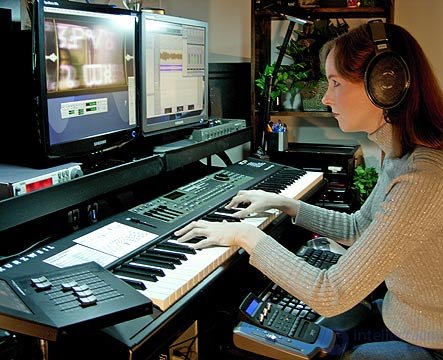
In addition to the sounds for a full-fledged game, you also need music (soundtrack). It will be a sound background for what is happening on the screen. Music is also one of the stylistic elements of the game, and most of all influences the player's mood. Ready-made music should be a long time to choose the right tempo and mood. There are many both paid and free collections of game background compositions that can be used in your game (article "
Music for creating games "). Or you can order composers to write new music specifically for the game.
Voice acting
The third sound leaving the game is the voice of game dialogues and monologues. This component is very expensive, but its presence in the game is not necessary. In some games there are almost no dialogs and texts, and where there is, they can be left unanswered in the form of text subtitles. Small games do without voice acting, and in large projects they even invite world-class professional actors to voice.
The presence in the game of music and full-fledged voice acting significantly increases the volume of the finished game occupied on the hard disk. But as far as possible it is better to add the voice acting to the game. This will increase the involvement of the player in the plot and the story you are telling, since most players ignore and do not read ordinary texts that are not voiced at all.
8. Polishing
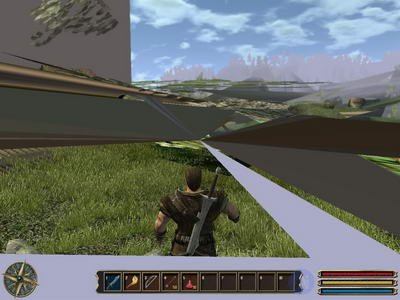
The process of developing a large game is constructed in such a way that its various elements are handled by various specialists. At the initial stage, the game is a fragmented set of creative developments in various areas of art: images, sounds, 3D models, architecture, texts, scenes, video sequences, design. And then, finally, there comes a moment when scattered stones need to be collected. Using software tools, disparate objects are connected into a single complex system.
Mixing material (a-version)
When building a game on a game engine, the integration of objects occurs gradually from the very beginning of the process. While the game is not assembled to the end, it is called the alpha version. At this point, it is already possible to engage in testing individual levels, scripts and other mechanisms.
At this stage, it is already technically possible to release a demo version or at least a video with the gameplay in order to attract players to your project in advance.
Troubleshooting (b-version)
When the game is fully assembled, it remains only to eliminate the resulting errors (bugs). They appear in any case, since the game is a system with a complex structure. The elements of the game themselves are clear and simple, but the connections between them are so complex and florid that the process of debugging and fixing errors can take up to 40% of the total project development time. Fully assembled, but not yet tested for errors, the game is called a beta version.
Search for errors in the game are
testers . Very often, groups of ordinary players are involved as testers, and this serves as the beginning of their careers in the gaming industry. The easiest way to solve this problem is in online games - the developers organize open beta tests, in which all interested players participate.
9. Sale

The development studio and all creative issues are dealt with by the developers studio, and all other issues (loans, finance, contracts, rights protection, promotions, localization, sales) are usually shifted to the shoulders of another organization - the game publisher.
Relations between developers and publishers can be very different: an agreement on cooperation on equal rights; all rights, financial risks and possible profits belong to the publishing house, and developers only get their small percentage of the profits; all rights of developers, publishing house is a separate company temporarily hired by developers; developers and publishers are different divisions of one large corporation.
Advertising
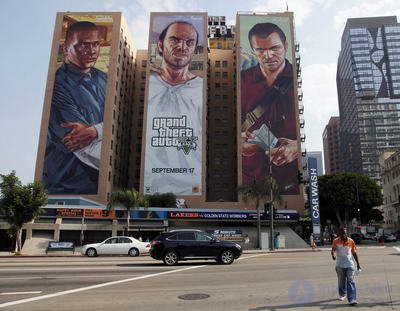
Before selling a game to an end user, publishers first need to report the existence of this game. Of course, they can buy a game, without knowing anything about it at all, simply by choosing at random a store, but the chance that they will choose your game in this way is extremely low. It is much more profitable to distribute information about the game through all possible channels. To do this, use either advertising in the store computer disks, or advertising on Internet resources.
The gaming industry is not similar to the market of ordinary goods, it has its own characteristics. Information among the active gaming audience spreads at lightning speed and covers all around. With this feature, the most effective advertising game is its high quality. If your game is interesting and exciting, then game magazines and informational Internet portals will write about it for free, players will begin to discuss the game and carry information further, and after passing the first game they will look forward to additions and continuations of this project. Thus, not spending a penny on advertising, but earning respect from the players, you will ensure the success of the current game, and all subsequent additions.
Localization

Have you released the game in your native Russian? Get ready for the fact that the audience of potential players will consist of only a few countries, and the profit will be scanty. Making the game in English is much more profitable - most of the players around the world will understand its text, these players will be much more solvent, and therefore the profits will be an order of magnitude larger.
Ideally, you need to release the game in several of the world's most popular languages (English, German, French, Spanish, Chinese, Japanese), but for this you need to have a whole staff of
translators and
localizers . Moreover, it is desirable that the translators were native speakers. They will be able to transfer the maximum meaning of the original text to their native language. But simple lonely developers do not threaten such luxury, and most large companies are not in a hurry to spend money on this business.
Significantly simplify the localization process will help the separation of the artistic text from the technical part of the game. For this you need to place the texts, subtitles and audio files of voice acting in separate easily accessible files of standard types. And in the program code of the game you need to leave only links so that the text is loaded into the game from these files. The most popular games are translated by enthusiastic players on their own, without any participation by the developers. The separation of the artistic text at the stage of developing the game will greatly help such enthusiasts to do their good deed.
Sales system

The game is ready, the players are waiting for its release, it remains only to decide how to deliver the game to end users, and take money from them.
The classic way (the release of large quantities of computer discs, and selling them through retail stores) is still relevant, but is only suitable for large companies, and for games that have at least some initial popularity.
For small groups of developers, the distribution of the game through digital distribution systems (large online stores) is ideal. This option provides a new, little-known game already ready audience of buyers, which was formed around the service. The most famous example is the Steam service. Thanks to the huge audience of players using Steam, almost every game released in this online store, immediately gaining world fame.
Or you can easily create your own online store with one single product - a game created. But in this case, you will have to advertise not only the game, but also the Internet address of the store, and win the audience on your own.
10. Support
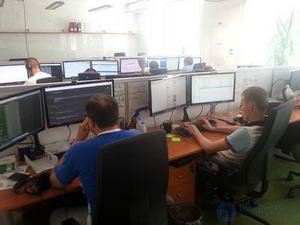
Creating a game and selling it is not the end of the game project life cycle. When the game is already at the end users, players may still need your help. Large companies even have entire
technical support departments dealing with such issues.
Patch release
The previous beta test removed the most obvious mistakes from the game, but this does not mean that they are not left in the game at all. It often happens that the massive use of the game reveals smaller and inconspicuous errors that small groups of beta testers could not detect. These may be problems due to incompatibility with unpopular brands of equipment, or errors due to unnatural use of gaming features. The fantasy of some players exceeds the imagination of the developers, they can take such actions in the game, about which the developers could not even think.
All this contributes to the fact that often you have to make corrections to errors in an already finished game. Such fixes are called patches, and this term is very common in the gaming industry. Few people manage to immediately release the perfect games, most often the games are brought to the ideal after their official release.
If you received money from players for each sold copy, then you will not get anything for issuing patches. From the market point of view, the release of patches is an unprofitable and useless action that is not necessary to perform. But in the realities of the gaming industry, if you do not support your product to the end, then you get a bad reputation from the players, and you lose the possible future profits. Despite its free, the release of patches is a very useful and necessary thing.
Issue add-ons
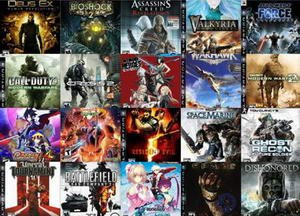
An interesting and fascinating game without serious flaws and mistakes gives you a green light for further creative activity. Did the players cheer up your gaming product? So for an already finished game, you can prepare a supplement or a full second part, and the storyline that has begun can be developed further, turned into an entire epic, or even a full-fledged game universe.
We take the game development plan and begin to create a new work of art in the same ten stages, but now fully armed with accumulated experience and acquired skills.
 Many people playing computer games do not even realize how many works and creative ideas are invested in each individual game.
Many people playing computer games do not even realize how many works and creative ideas are invested in each individual game. It is possible from the very beginning to present the finished game in the smallest details, or it is possible, in the course of development, to think out the plot, style and features of the game. In this case, unnecessary accuracy is not necessary, but, at a minimum, you need to set the direction of development of our game project. Game genre must be selected at the very beginning without fail. Genre and will be the main direction of the game.
It is possible from the very beginning to present the finished game in the smallest details, or it is possible, in the course of development, to think out the plot, style and features of the game. In this case, unnecessary accuracy is not necessary, but, at a minimum, you need to set the direction of development of our game project. Game genre must be selected at the very beginning without fail. Genre and will be the main direction of the game. The division of computer games into genres is very specific and unlike the system of genres of films and books. Game genres determine only the basic actions that players will perform during the game, thus they answer only the question "WHAT?". The questions "WHERE?" and when?" another main characteristic of the game is the setting.
The division of computer games into genres is very specific and unlike the system of genres of films and books. Game genres determine only the basic actions that players will perform during the game, thus they answer only the question "WHAT?". The questions "WHERE?" and when?" another main characteristic of the game is the setting. Creating a game material (content, content) is a purely creative part of the process, we will consider it a bit later, but for now let's analyze the program code only as a tool. In this case, the program code is a skeleton (skeleton) on which the results of all subsequent development stages will be strung.
Creating a game material (content, content) is a purely creative part of the process, we will consider it a bit later, but for now let's analyze the program code only as a tool. In this case, the program code is a skeleton (skeleton) on which the results of all subsequent development stages will be strung. Fortunately, in our time, you can not mess around for a long time with writing low-level software, and immediately use the ready-made software module (game engine), where basic functions have already been implemented that can link together graphics, sound, objects and their movements. Thus, the choice of programming language is replaced by another dilemma - the choice of a ready-made game engine (for more information on the game engines currently available on the market, see the article “ Free game engines ”).
Fortunately, in our time, you can not mess around for a long time with writing low-level software, and immediately use the ready-made software module (game engine), where basic functions have already been implemented that can link together graphics, sound, objects and their movements. Thus, the choice of programming language is replaced by another dilemma - the choice of a ready-made game engine (for more information on the game engines currently available on the market, see the article “ Free game engines ”). The most important creative part of any game is game mechanics. This thing is not on the surface, so it often eludes the gaze of inattentive game lovers.
The most important creative part of any game is game mechanics. This thing is not on the surface, so it often eludes the gaze of inattentive game lovers. Objects
Objects If the “control” is responsible for the movement of the character under our control, then the physical engine is responsible for the movements that occur without the direct intervention of the player. These actions mimic the physical laws of the real world (sometimes a bit distorted towards fiction). An abandoned ball bounces off the floor, an overturned barrel rolls down from an inclined surface, a shot with a powerful weapon throws the shooter back, a fragile object thrown from a height is broken - these are all examples of the action of the physical engine.
If the “control” is responsible for the movement of the character under our control, then the physical engine is responsible for the movements that occur without the direct intervention of the player. These actions mimic the physical laws of the real world (sometimes a bit distorted towards fiction). An abandoned ball bounces off the floor, an overturned barrel rolls down from an inclined surface, a shot with a powerful weapon throws the shooter back, a fragile object thrown from a height is broken - these are all examples of the action of the physical engine. AI is responsible for the behavior of computer enemies or allies.
AI is responsible for the behavior of computer enemies or allies. The rules of the game in the form of game mechanics are ready, now we need to create platforms where these rules will start to work. Created game objects are placed in separate virtual spaces - levels (locations). Games often contain many separate levels, the transition between which occurs during the plot. But lately, thanks to the increased performance of computers, games are released with one large whole world, which is only conditionally divided into different locations (GTA, Skyrim).
The rules of the game in the form of game mechanics are ready, now we need to create platforms where these rules will start to work. Created game objects are placed in separate virtual spaces - levels (locations). Games often contain many separate levels, the transition between which occurs during the plot. But lately, thanks to the increased performance of computers, games are released with one large whole world, which is only conditionally divided into different locations (GTA, Skyrim). Quite often, a level editor is supplied with the game, through which ordinary players can create new maps and levels for themselves. Game developers support the distribution of homemade cards between players and often spread the best work on their official servers. Level editors are created not only to entertain players and increase the life of a single game, but also to find the most talented people among the game audience. Thus, gaming studios solve their personnel problem. As mentioned above: the best level designer is an avid player.
Quite often, a level editor is supplied with the game, through which ordinary players can create new maps and levels for themselves. Game developers support the distribution of homemade cards between players and often spread the best work on their official servers. Level editors are created not only to entertain players and increase the life of a single game, but also to find the most talented people among the game audience. Thus, gaming studios solve their personnel problem. As mentioned above: the best level designer is an avid player. Next, we begin to cover the bare frame of the game with an ornament in the form of graphics.
Next, we begin to cover the bare frame of the game with an ornament in the form of graphics. Animations
Animations Visual special effects are, in essence, the same animations, but instead of moving objects in them, moving particles and light filters are used. Rays of light in different directions when taking bonuses, fire on a burning building, smoke screen after the explosion of a grenade, laser beams from the barrel of rifles, the imposition of blur filters when under water and blackout filters in poorly lit places - all these are special effects. Without such effects, the game will seem bland and too ordinary. The use of special effects adds to the game brightness, richness and expressiveness.
Visual special effects are, in essence, the same animations, but instead of moving objects in them, moving particles and light filters are used. Rays of light in different directions when taking bonuses, fire on a burning building, smoke screen after the explosion of a grenade, laser beams from the barrel of rifles, the imposition of blur filters when under water and blackout filters in poorly lit places - all these are special effects. Without such effects, the game will seem bland and too ordinary. The use of special effects adds to the game brightness, richness and expressiveness. You need to decorate not only the game levels, but also the system that unites them into a single whole - the game menu (lines, buttons, settings pages). The initial menu is generally the business card of the game, and it should look perfect. On the game screen there are also many elements to which you can apply the design - the number of lives, lifebar, minimap, quick-action menu, hero inventory, task lists, dialog screens. In English, all this is called one abbreviation - GUI (Graphical User Interface - graphical user interface).
You need to decorate not only the game levels, but also the system that unites them into a single whole - the game menu (lines, buttons, settings pages). The initial menu is generally the business card of the game, and it should look perfect. On the game screen there are also many elements to which you can apply the design - the number of lives, lifebar, minimap, quick-action menu, hero inventory, task lists, dialog screens. In English, all this is called one abbreviation - GUI (Graphical User Interface - graphical user interface). Attracting a player to your project is very difficult, but even harder to make the player go through the game to the end. Any disappointment, boring or difficult place can instantly push the player away from further play. In most cases, the player will leave and forget the game without regret.And only a competently submitted high-quality storyline can make a player gather strength, go through the whole game, which means listen to your interactive story to the end.
Attracting a player to your project is very difficult, but even harder to make the player go through the game to the end. Any disappointment, boring or difficult place can instantly push the player away from further play. In most cases, the player will leave and forget the game without regret.And only a competently submitted high-quality storyline can make a player gather strength, go through the whole game, which means listen to your interactive story to the end. In old classic games, the plot exists apart from the gameplay. For example, when loading or ending levels, we are introduced to the storyline, talk about the relationship between heroes and enemies, explain what and what needs to be done on the level. In the process of the game itself, none of the above makes any difference, and the player can safely skip all these texts. Most often this is the case - the texts remain unread. And all because there is no good reason to read them.
In old classic games, the plot exists apart from the gameplay. For example, when loading or ending levels, we are introduced to the storyline, talk about the relationship between heroes and enemies, explain what and what needs to be done on the level. In the process of the game itself, none of the above makes any difference, and the player can safely skip all these texts. Most often this is the case - the texts remain unread. And all because there is no good reason to read them. can be seen that you can watch video sequences (cutscene). This is a game.
can be seen that you can watch video sequences (cutscene). This is a game. For any game movement you need to add the appropriate sound. It can be sword strikes, striking a hand-to-hand strike, sounds of moving a car, getting a bonus, and detecting a hero by an enemy. Do not think that this is some kind of overkill, and you can get by with just a few basic sounds. For example, in most 3D-Action games, the sound of footsteps of the main character and enemies is neglected. As a result, when viewed from the first person, it is clear that the hero moves in space, but it seems that he does not walk, but smoothly slides forward. And the enemies without the voice of the steps in general can run silently behind the hero from behind and badly spoil the nerves of the players.
For any game movement you need to add the appropriate sound. It can be sword strikes, striking a hand-to-hand strike, sounds of moving a car, getting a bonus, and detecting a hero by an enemy. Do not think that this is some kind of overkill, and you can get by with just a few basic sounds. For example, in most 3D-Action games, the sound of footsteps of the main character and enemies is neglected. As a result, when viewed from the first person, it is clear that the hero moves in space, but it seems that he does not walk, but smoothly slides forward. And the enemies without the voice of the steps in general can run silently behind the hero from behind and badly spoil the nerves of the players. In addition to the sounds for a full-fledged game, you also need music (soundtrack). It will be a sound background for what is happening on the screen. Music is also one of the stylistic elements of the game, and most of all influences the player's mood. Ready-made music should be a long time to choose the right tempo and mood. There are many both paid and free collections of game background compositions that can be used in your game (article " Music for creating games "). Or you can order composers to write new music specifically for the game.
In addition to the sounds for a full-fledged game, you also need music (soundtrack). It will be a sound background for what is happening on the screen. Music is also one of the stylistic elements of the game, and most of all influences the player's mood. Ready-made music should be a long time to choose the right tempo and mood. There are many both paid and free collections of game background compositions that can be used in your game (article " Music for creating games "). Or you can order composers to write new music specifically for the game. The process of developing a large game is constructed in such a way that its various elements are handled by various specialists. At the initial stage, the game is a fragmented set of creative developments in various areas of art: images, sounds, 3D models, architecture, texts, scenes, video sequences, design. And then, finally, there comes a moment when scattered stones need to be collected. Using software tools, disparate objects are connected into a single complex system.
The process of developing a large game is constructed in such a way that its various elements are handled by various specialists. At the initial stage, the game is a fragmented set of creative developments in various areas of art: images, sounds, 3D models, architecture, texts, scenes, video sequences, design. And then, finally, there comes a moment when scattered stones need to be collected. Using software tools, disparate objects are connected into a single complex system. The development studio and all creative issues are dealt with by the developers studio, and all other issues (loans, finance, contracts, rights protection, promotions, localization, sales) are usually shifted to the shoulders of another organization - the game publisher.
The development studio and all creative issues are dealt with by the developers studio, and all other issues (loans, finance, contracts, rights protection, promotions, localization, sales) are usually shifted to the shoulders of another organization - the game publisher. Before selling a game to an end user, publishers first need to report the existence of this game. Of course, they can buy a game, without knowing anything about it at all, simply by choosing at random a store, but the chance that they will choose your game in this way is extremely low. It is much more profitable to distribute information about the game through all possible channels. To do this, use either advertising in the store computer disks, or advertising on Internet resources.
Before selling a game to an end user, publishers first need to report the existence of this game. Of course, they can buy a game, without knowing anything about it at all, simply by choosing at random a store, but the chance that they will choose your game in this way is extremely low. It is much more profitable to distribute information about the game through all possible channels. To do this, use either advertising in the store computer disks, or advertising on Internet resources. Have you released the game in your native Russian? Get ready for the fact that the audience of potential players will consist of only a few countries, and the profit will be scanty. Making the game in English is much more profitable - most of the players around the world will understand its text, these players will be much more solvent, and therefore the profits will be an order of magnitude larger.
Have you released the game in your native Russian? Get ready for the fact that the audience of potential players will consist of only a few countries, and the profit will be scanty. Making the game in English is much more profitable - most of the players around the world will understand its text, these players will be much more solvent, and therefore the profits will be an order of magnitude larger. The game is ready, the players are waiting for its release, it remains only to decide how to deliver the game to end users, and take money from them.
The game is ready, the players are waiting for its release, it remains only to decide how to deliver the game to end users, and take money from them. Creating a game and selling it is not the end of the game project life cycle. When the game is already at the end users, players may still need your help. Large companies even have entire technical support departments dealing with such issues.
Creating a game and selling it is not the end of the game project life cycle. When the game is already at the end users, players may still need your help. Large companies even have entire technical support departments dealing with such issues. An interesting and fascinating game without serious flaws and mistakes gives you a green light for further creative activity. Did the players cheer up your gaming product? So for an already finished game, you can prepare a supplement or a full second part, and the storyline that has begun can be developed further, turned into an entire epic, or even a full-fledged game universe.
An interesting and fascinating game without serious flaws and mistakes gives you a green light for further creative activity. Did the players cheer up your gaming product? So for an already finished game, you can prepare a supplement or a full second part, and the storyline that has begun can be developed further, turned into an entire epic, or even a full-fledged game universe.
Comments
To leave a comment
Computer games developming, game-design
Terms: Computer games developming, game-design